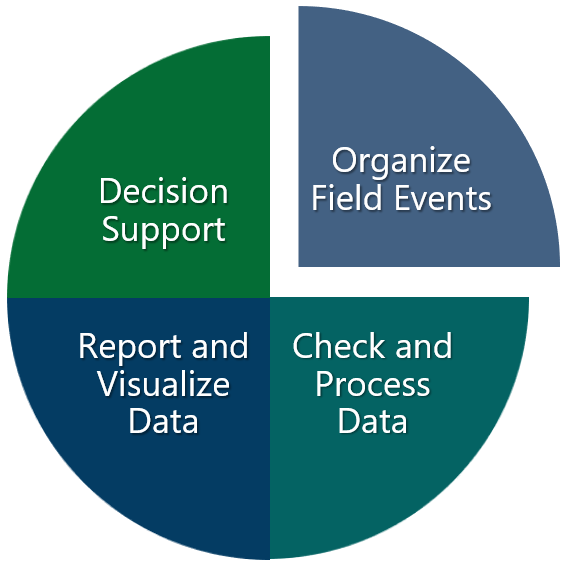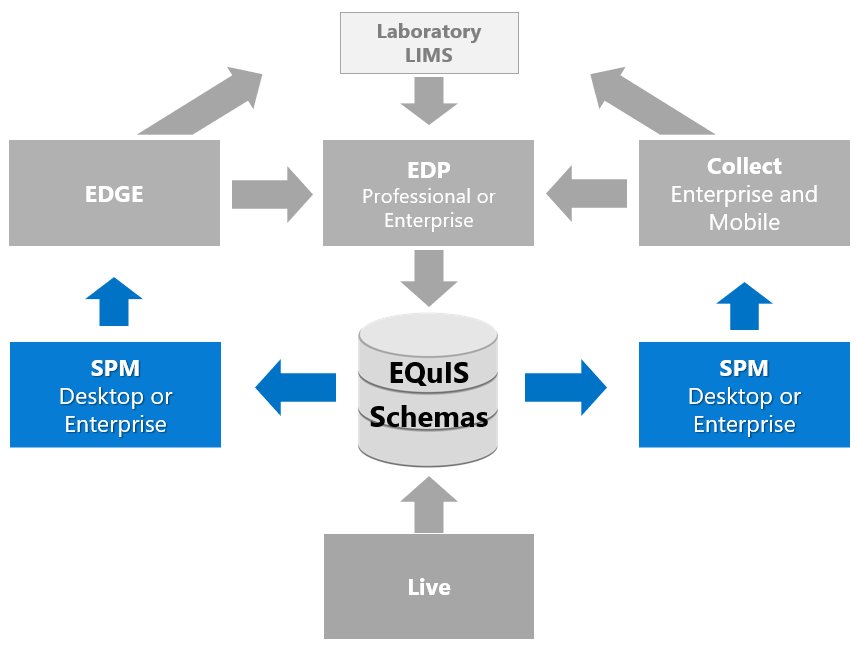Introduction to the EQuIS Sample Planning Module
The Sample Planning Module (SPM) is part of the EQuIS environmental data management workflow and is designed to make sample planning easier and to improve communication between laboratories and EQuIS Professional clients. SPM can also create Sample Analysis Plans that adhere to USEPA standards.
SPM is linked directly to the EQuIS database and provides a planning tool for automated sampling events. SPM eliminates repetitive, manual, error-prone data collection. The following activities are completed using SPM:
•Plan, schedule, and track recurring sampling events
•View and download calendars for upcoming events
•Generate Collect or EDGE Field EDD templates and other items for field data collection
•View the status and completeness of samples and activities
|
|
EQuIS SPM Workflow
Create new plans and tasks for future use and easily add contracts, methods, and laboratories with the SPM workflow. Incorporate Completeness Reports that allow clients to check the completeness of scheduled analyses.
For a specific site (i.e., facility), define one or multiple sampling plans. Plans can consist of one task or many tasks. Since the field work and laboratory analyses may be performed by contractors or sub-contractors, contracts are assigned to each plan. The same contracts can be shared between plans. Therefore, contract changes may apply to all plans referencing the contract.
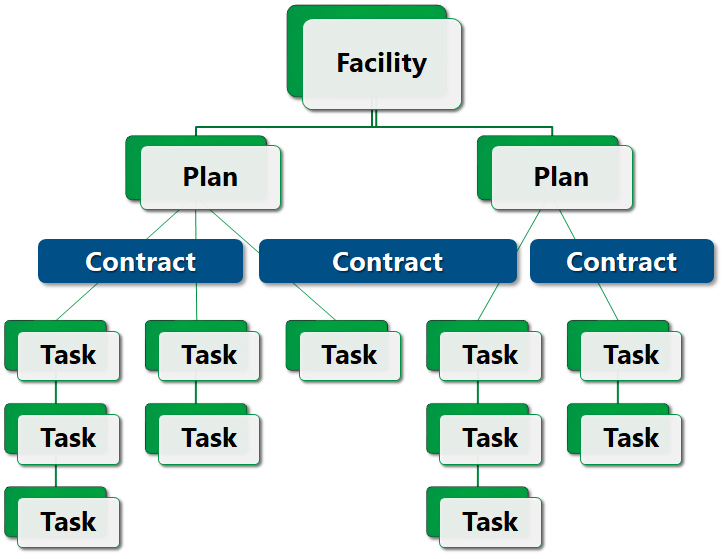
EQuIS SPM Workflow Steps
1.Define a Plan
2.Setup a Contract
3.Plan a Task
4.Schedule a Task
5.Prepare for Field Sampling (e.g., create an EDGE EDD template for field crews and generate chains of custody, task lists, bottle requests, and/or container labels for one or more sampling events)
6.(Optional) Manage Sample Receipt Notifications (SRNs)
7.Run Completeness Reports (after EDDs have been loaded into EQuIS)

SRN Workflow (Optional)
The Sample Receipt Notification module in SPM allows users to track and document laboratory receipt information and testing-related issues reported by laboratories in EQuIS. Use work orders to organize SRNs for a specific chain of custody (COC).
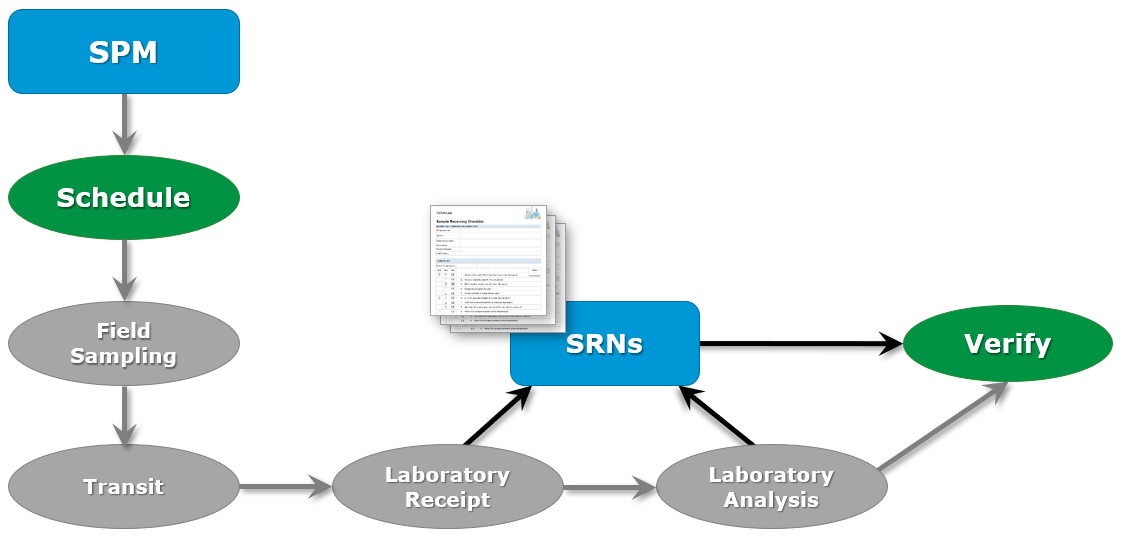
Key Terminology
Plans – Plans are collections of tasks and/or sampling events in support of one common goal (e.g., groundwater and surface water monitoring, water levels, and other field activities). Plans are defined by: (1) the Plan Code (required), (2) dates and details, and (3) naming Schemas for tasks and samples.
Contracts – Contracts represent the specifications agreed upon with service providers, such as laboratories and field sampling crews. At least one contract must be defined per plan. Method Analyte Groups (or contract-specific analyte suites) must be defined. MAGs must be associated with a contract to make them available for selection when adding samples to planned tasks.
Method Analyte Group (MAG) – Analytes may be grouped based on sampling requirements, reporting requirements, or laboratory contracts. User-defined group of analytes are referred to as Method Analyte Groups, or MAGs. Within SPM, MAGs are used to facilitate logical and efficient scheduling and reporting processes.
Contract Container – Containers (bottleware) are the vessels in which samples are collected. They are associated to contract MAGs via contract analytic methods, and subsequently associated to planned and scheduled samples.
Tasks – The planned tasks consist of sampling events that have a specific set of locations, parameters, activities, and recurrence. After tasks are planned and approved, they need to be scheduled to begin the tracking progress. Field data and laboratory data are linked to the task for which they were collected.
Land Access Module – For some sampling events, land access permissions may be required. The SPM Land Access module captures the details of locations requiring access permission and generates reports for automated notification of upcoming tasks requiring access permission.
Commitments – Commitments are the details of the planned tasks and include reporting requirements, permit considerations and task supervisor information.
Chain of Custody (COC) – In legal contexts, laboratory chain of custody procedures refer to the documentation or paper trail that records the quality of all samples during collection, transportation, and storage prior to analysis. The COCs provide documentation of analytical instructions to the analytical laboratory, are a record of samples sent to the laboratory, and guarantee samples were handled appropriately (not available for tampering) prior to analysis.
EDGE EDDs – Generated from EQuIS SPM, EDGE EDDs are templates that include facility, task, sample and activity information and are then provided to the field crew. The EDGE EDD is facility-specific, but may include one or more sampling events.
Sample Receipt Notification (SRN) – A document generated by laboratories to acknowledge receipt and condition of samples. SRNs are also used to identify any issues with the received samples. SRN EDDs are formatted SRNs that can be imported to the EQuIS database through EDP.
SRN Work Orders – Within the SRN module, work orders are used to organize SRNs for specific COCs.
A work order is also referred to as a Sample Delivery Group (SDG), which is a group of samples associated with a single COC.
SRN Amendments – Amendments record instructions from the client to the laboratory in response to SRNs that can include correction of errors or other communications. Example errors may include incorrect sample codes and sample dates, and example communications may include directions to proceed or cancel analyses, prioritize one analysis over another in a scenario of limited volume, etc.
Completeness Reports – To verify that all of the anticipated samples, results and activities have been loaded into the EQuIS database, run the completeness reports. These reports may be run manually from EQuIS SPM, Professional, and Enterprise, or they may be setup as EIAs to run automatically.
EQuIS SPM Interface
Once a plan has been created, the main Sample Planning Module interface can be accessed. The SPM interface consists of a series of ribbons to access various components of EQuIS SPM. The ribbon tabs are organized around planning, scheduling (calendar tab), and reporting.
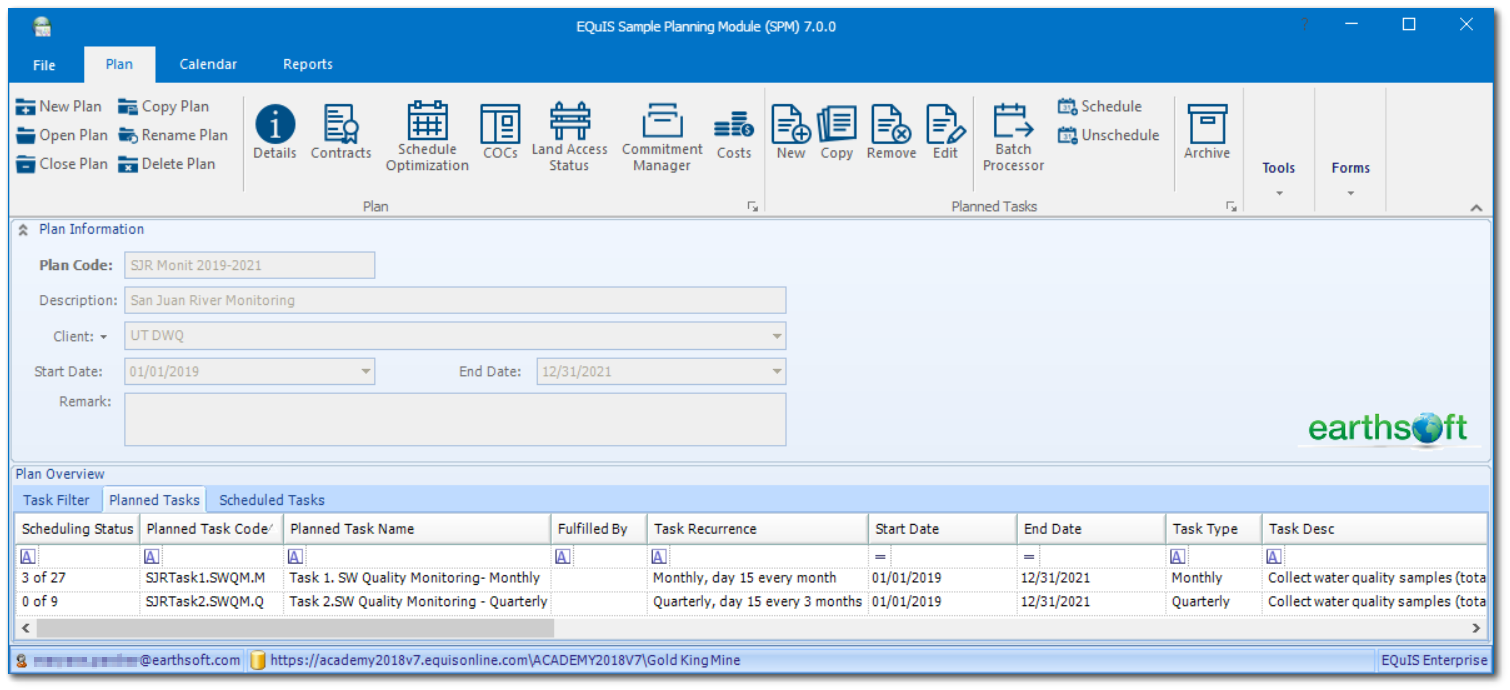
To access the SPM backstage, click on the File tab. The main menu will open and allow the user to:
•Setup a new connection to an EQuIS database;
•Open or Save an existing EQuIS database connection;
•Access the Quick Start Guide (i.e., help files);
•Register different components of the EQuIS application as well as renew maintenance;
•Display the version of EQuIS SPM as well as various components associated with the installation of EQuIS SPM by selecting the About button; and
•Configure several Options, including appearance, application start-up, calendar, lab contracts, task validation, and working directories.
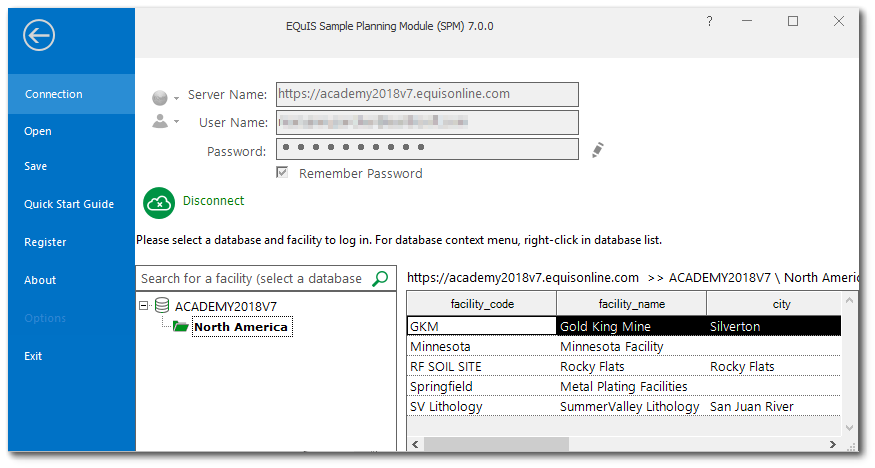
Training Scenario Overview
We will be working with data collected for the Gold King Mine facility. Located approximately 10 miles north of Silverton, CO, the Gold King Mine Site was claimed in 1887 and was last active in the 1920s. Mining activities produced acid mine drainage that required monitoring to avoid contamination of the nearby Animas River.
In August 2015, approximately three million gallons of mine waste were accidentally released into Cement Creek, a tributary of the Animas River. The spill contained known contaminants of arsenic, cadmium, copper, lead, and aluminum. The spill changed the color of the river to orange. The post-spill monitoring includes surface water, soil and sediment to measure impact of the spill on the greater San Juan River.
The release from GKM impacted water quality in four states: Arizona, Colorado, New Mexico and Utah. Sampling locations were grouped by state. For these training exercises, we will focus on the Utah Location Group. SPM will be used to plan and schedule the sampling events.
